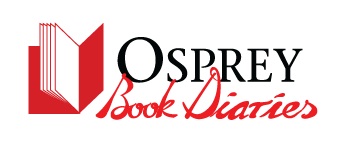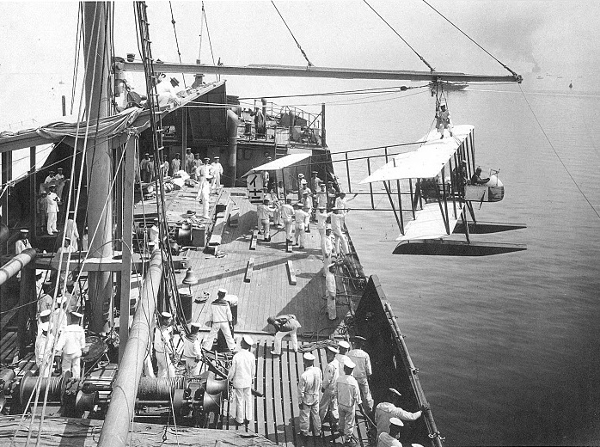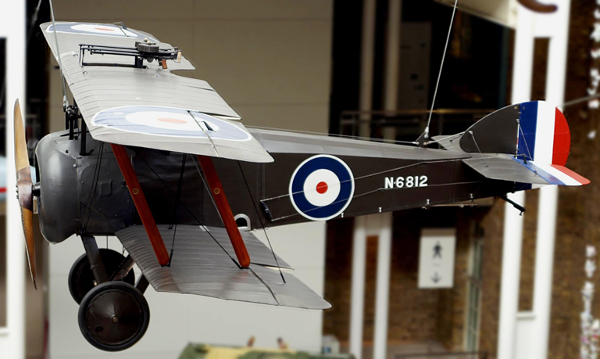
Back to work
It’s been a few months since my last Book Diaries posting. There is a good reason for that. I did no work whatsoever on World War I Seaplane and Aircraft Carriers in May and June, only picking up the project again in mid-July.
(That noise you just heard was Tom Milner, my editor, choking.)
This is not unusual for me. I typically work on three to five major projects simultaneously. I was behind on one (a non-Osprey book on Texas shipwrecks) and spooling up another Osprey (a naval Duel focused on the War of 1812 in the Great Lakes – you heard it here first). So, I set aside World War I Seaplane and Aircraft Carriers for a while.
This was despite the fact that the artist’s brief is due on October 1. And Tom will get it September 15 or so – i.e. in four weeks’ time. The text and photos are due early next year on March 1, and I do not plan to start writing the book until mid-November. I will order the images I need (the ones I do not already have) in January. (No sense in committing money too early.)
The reasons I can do this are twofold. (1) This isn’t my first New Vanguard, and with experience I can plan fairly accurately how long things will take. And (2) the bulk of the work – the research – has already been done. I have almost all the images I plan to use, either already in hand or cataloged for order. Lining them up? That is research. I also have the bulk of the material needed for the artist’s brief on my computer. And the rest I know where to get it. That is also research.

Launching a Farman
How long does it take to write this book? It takes me about a week to build the description for a plate. The cutaway takes two weeks or so. That is working evenings and weekends. There is this thing called the day job – although I have been known to spend vacation time writing books.
(Wait? You spend vacation days working? Not really. I spend my vacation days doing something I enjoy – writing history books. Some folks spend a week climbing mountains. I spend it writing. You tell me who is crazier.)
As for writing the text? I average about 1,000 words a day. It could be as little as 500 words, if there are problems. When I have my ducks in a row and really cooking I can hit 2,000 words. (Normally I write the new words in the morning and edit the previous day’s work in the afternoon. Or, during a workweek, write in the evening, and edit that day’s take the next evening.)
If I were writing full-time could I finish writing a New Vanguard in two weeks? Just about, for the text. Throw in five weeks for the artist’s brief, and a week for rewrite and emergencies, and I could probably write a whole New Vanguard in two months.
(Now I can really hear Tom spluttering. He is now wondering why I insisted on that absurdly long schedule to deliver a book I’m now saying I can do in just a few months.)

A naval Sopwith Camel
Except for one small problem. I can only do that after my research is done. Once I start writing I know what I am going to write. The words flow. Research takes calendar time. It requires ordering books via interlibrary loan, finding them on online archives, and ordering them through abebooks.
It requires finding librarians with odd pieces of critical information – like the interior arrangement of Ark Royal. Or contacting experts seeking answers to odd questions. (For the plate on the Battle of Lake Champlain in NVG Great Lakes Warships, I needed to know how anchoring a ship on springs works. I spent several weeks exchanging emails finding out.) These folks are often busy; it typically takes months for the information I need to arrive.
My Osprey editors must wonder why sometimes I fight so hard for a long delivery schedule on a certain book, but offer to do another book in half the time. The answer, again, is the level of research. The more new research I need to do and the greater the uncertainty I have about finding what I need, the more time I need.
But now the research is done (mostly) and it’s on to the artist’s brief. And Tom? I am done with all but two plates, so don’t worry. You will get the artist’s brief on schedule. And the rest of you will learn how I create it in the next installment.
| Previous: That One Guy | Next: Plates |

Comments
You must be logged in to comment on this post. Click here to log in.
Submit your comment